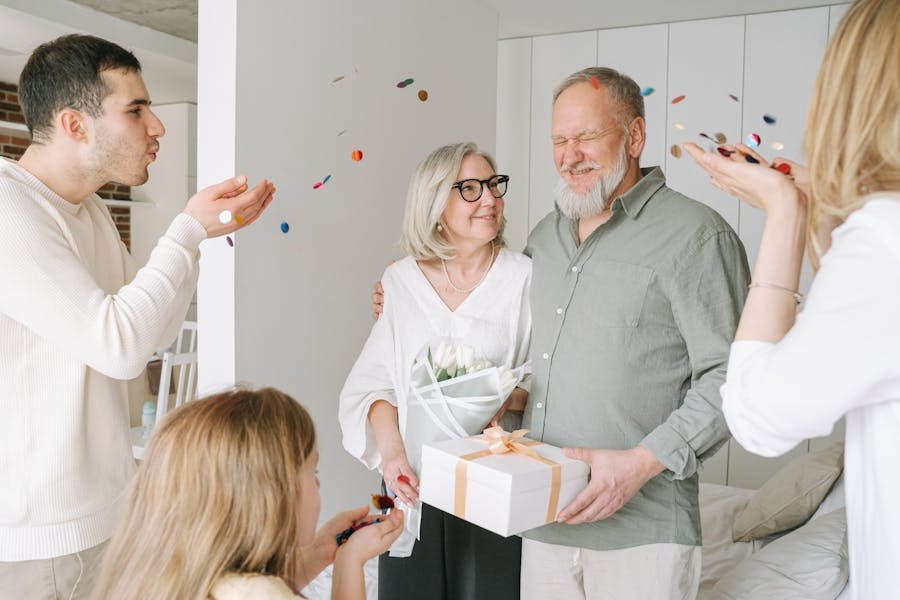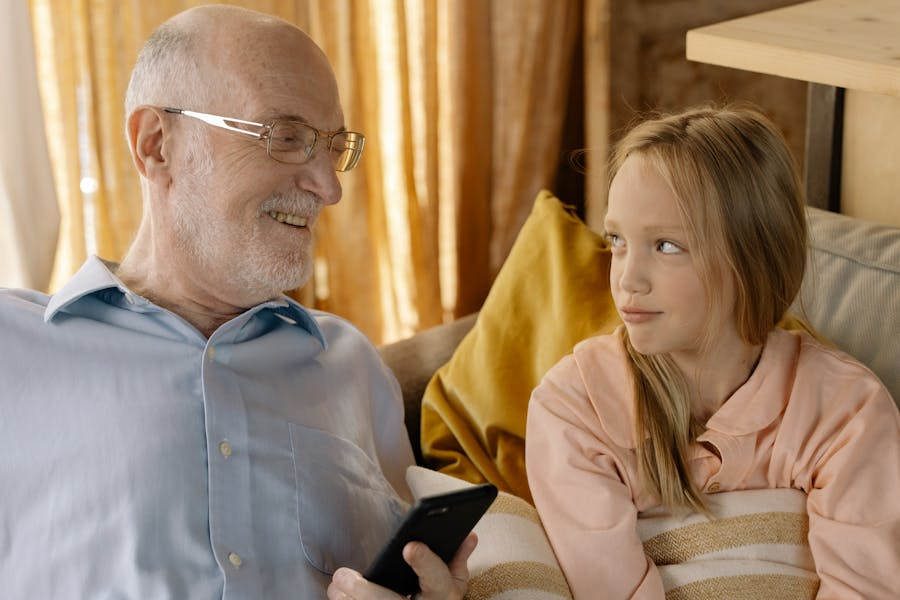


Family involvement plays an important role for memory care residents.
Would placing your loved one in a memory care home feel like admitting defeat? You’re not alone. That gnawing guilt, the “what ifs” and “if only” circling your mind—we know them all too well.
You’re caught in a tug-of-war between what your heart wants and what reality demands. Tough spot, isn’t it?
What if we told you that this decision, as heavy as it weighs on your heart, could be the start of something unexpectedly beautiful?
Imagine transforming not just the quality of life for your loved one but rewriting the narrative on memory care together. Sounds a bit like finding light at the end of a tunnel, right?
Let’s dive deep and uncover the hidden power of family involvement. Maybe, just maybe, we’ll discover that this journey can be about more than coping—it can be about thriving. Ready to flip the script?
Let’s begin.

You might think, “What difference does it make?” Well, more than you’d imagine. The presence of family in memory care isn’t just a nice-to-have; it’s a game-changer.
Being there and showing up can weave a safety net of emotional support that no medication can replicate.
Imagine this: your loved one, who might not remember your name but lights up with a smile that reaches their eyes when you walk into the room. That’s the magic we’re talking about.
Studies now show that this kind of emotional engagement can spark moments of clarity and joy in residents that previously seemed unreachable.
It’s like finding a backdoor to their memories through the heart, not the mind.

Now, let’s get creative. Gone are the days when visiting hours were the only way to connect.
Think virtual reality setups where families can visit from across the globe, experiencing shared moments in a garden or at a concert, all from the memory care facility.
Or consider personalized story sessions, where the family contributes stories and photos that staff weave into daily interactions, keeping the resident’s narrative alive and kicking.
There’s tech, too, that keeps you present even when you can’t be there physically. Apps that allow you to send voice messages or pictures that staff can share with your loved one throughout the day.
It’s about ensuring your presence is felt, wrapping your loved one in a quilt of memories and moments that say, “Hey, I’m here with you.”

Here’s where it gets exciting. Engaging with your loved one in these innovative ways isn’t just brightening their day; it’s redefining what we thought possible in dementia care.
Residents start to engage more with family, staff, and other residents. It’s like they’re tuning back into the world around them, one family visit at a time.
And those troublesome behaviors often associated with dementia? They start to diminish, making room for more peaceful days and restful nights.
But the ripple effects don’t stop there. Family-staff relationships begin to morph into partnerships.
With families more involved, staff gain insights that lead to personalized care strategies, turning routine care into care that resonates personally. It’s a win-win situation.

Of course, it’s not all smooth sailing. Research in this field is like navigating a maze; for every positive study, there’s another that contradicts it.
But here’s the thing: this variability isn’t a dead end. It’s a signpost pointing us towards a more nuanced understanding of dementia care.
For instance, we’re learning that what works like a charm for one resident might not have the same effect on another. And that’s okay.
It’s pushing us to tailor our approaches, to see each resident as an individual with their own set of keys to unlock their world.

We get it; life’s a whirlwind. Between the juggling act of work, personal commitments, and the constant tick of the clock, finding a moment to breathe feels like a luxury.
And when it comes to visiting your loved one in a memory care home, that nagging thought, “Could I be doing more?” might often play on repeat in your mind. Beating yourself up isn’t why we’re here.
Instead, let’s take a minute to acknowledge the power of your presence. Yes, your stories, voice, and laughter carry more weight than you realize.
It’s like a lifeline, a beacon of familiarity and love in the foggy seas of memory loss.
Now, imagine the difference.
If you’d like to learn more about memory care at Applewood Our House, contact us today.
The journey of dementia care for a loved one can feel overwhelming. Fortunately, you’re not alone.
There ae many organizations, apps, and tools designed to support families. offering guidance, connection, and practical assistance.
Alzheimer’s Association: Offers comprehensive information on dementia care, support groups, and local resources for families and caregivers.
Family Caregiver Alliance: Provides education, advocacy, and support services for family caregivers, including those caring for loved ones with dementia.
Dementia Friendly America: A network of communities across the U.S. striving to become more informed, safe, and respectful of individuals living with dementia, their families, and caregivers.
CaringBridge: A personal health journal app that allows families to easily share updates and coordinate care for their loved ones with a private, secure platform.
Available on iOS and Android
Tonic Health: A patient data collection platform that families and caregivers can use to track their loved one’s health information, medications, and appointments.
Available on iOS and Android